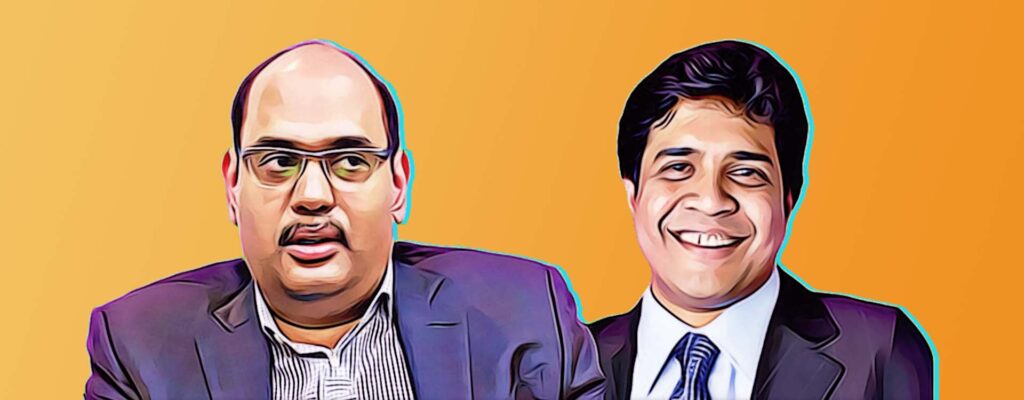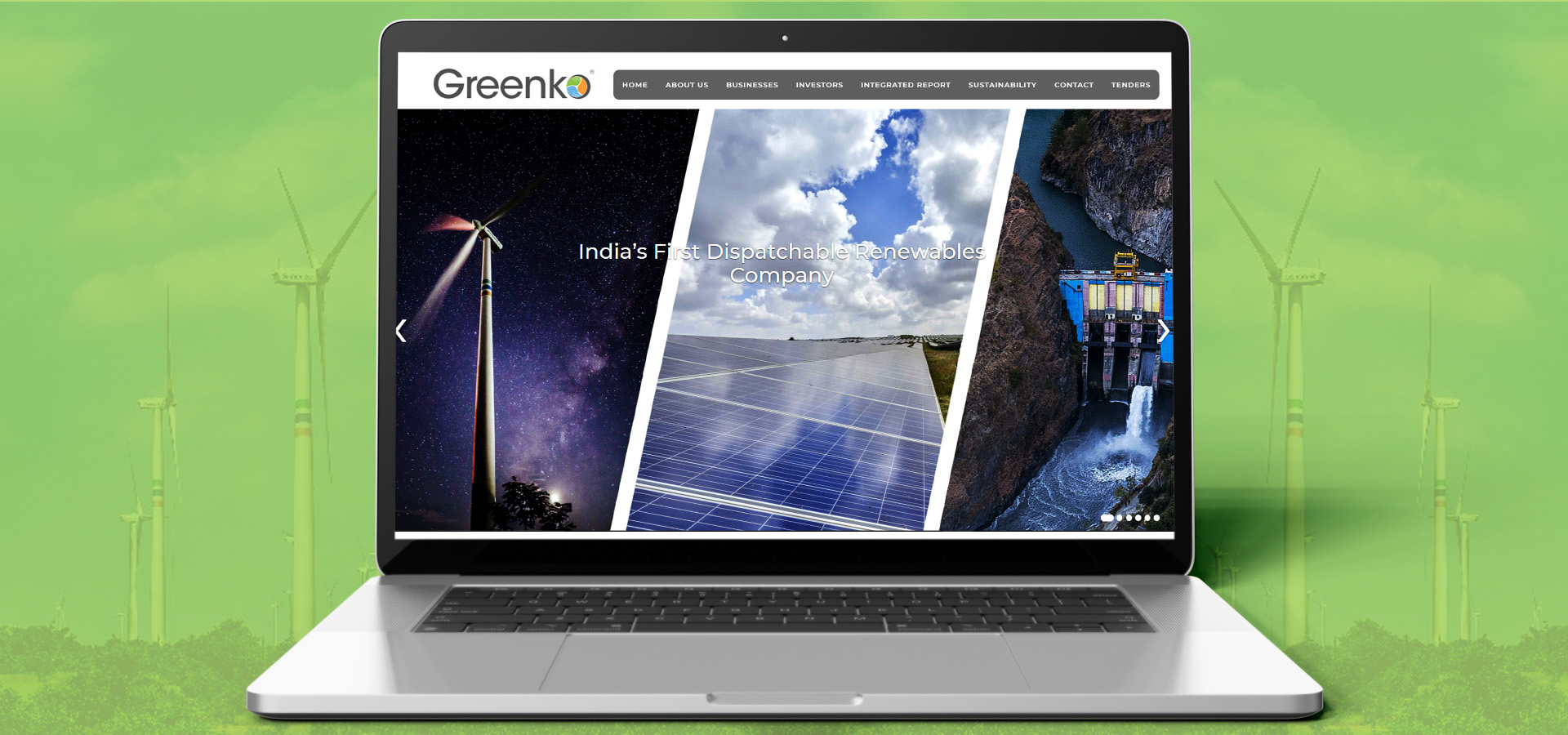Back in the late 20th century when global warming was not as big a threat as it is today, India was among the first nations to incorporate a separate ministry for renewable energy and set up an ambitious target. Soon after the formulation of the idea to shift towards renewables, India became the hotspot for clean technology. Many companies came forward to shoulder this responsibility and provide for a change, but only a few cleared the required mark and made their stance in the business world. Greenko was one of them.
Within a few years of its incorporation, Greenko emerged at the forefront as an Independent Power Producer (IPP) and has sustained its position to date as India’s leading renewable energy company, having an extensive portfolio in design, construction and operation of clean energy plants.
Achieving the First Gigawatt
Greenko Energy Holdings, the parent company of Greenko Group, was incorporated in Mauritius in 2004 by the ‘power’ duo – Anil Chalamalasetty and Mahesh Kolli. The company was listed on the London Stock Exchange (LSE) and raised with start-up capital through an initial public offering.
Before co-founding the company, Chalamalasetty had involved himself in evolving start-ups in information technology, infrastructure and environment sectors based out in the UK and India. On the other hand, Kolli, a humble mechanical engineer from Karnataka, worked as a consultant for over 13 years before taking an entrepreneurial plunge.
Since the beginning, the duo had an inclination towards clean energy and technology. They shared a common interest in providing environment-related solutions using advanced technology. While Chalamalasetty created strategic business plans for the company, Kolli introduced new project initiatives for regular business development.
The company was founded with an aim to accelerate the procurement of affordable and clean energy sources and hence take advantage of the opportunities for consolidation of the Indian renewable energy market.
Greenko started out with Biomass and Hydroelectricity generation and commenced its first operation in January 2006, gathering its initial fundraising to acquire two biomass plants and a 50% interest in a third. From there, the company strategised and divided its model into phases, achieving one phase target at a time. The majority of the company projects and sites were predominantly based in the central and southern states of Andhra Pradesh and Karnataka.
It was a simple formula – ‘Generate power from agro-waste for the grid (Government)’. The company used to buy low-cost agro-waste from local farming villages using intermediaries and generate and sell electricity at pre-announced tariffs to the regional electricity grid. The main off-taker of electricity is the state utility besides private companies/users using the state’s grid network and trading companies. The buying and selling of power takes place on the basis of pre-signed agreements/MoUs. The price (tariff), supply (in Megawatt/Gigawatt) and duration (number of years) of power supply is fixed between the IPP and the buyer.
This project increased Greenko’s credibility as it not only had a positive impact on the environment but also aided the income of the local community/farmers besides providing a waste management solution.
During the first two years of operation, Greenko managed to deliver 40.5 MW of Biomass and 65 MW of Hydroelectricity. By 2008, the company’s turnover increased by 270%. From here there was no turning back. Their human capital and employee base started to rise as they came in terms with their popularity in the sector.
‘‘
Greenko started out with Biomass and Hydroelectricity generation and commenced its first operation in January 2006.
The company added solar into its portfolio with incorporation of Greenko Solar Energy Private Limited in 2010. Even though the establishment of the solar energy subsidiary was made easy after Texas Pacific Group (TPG) pumped in $115 Million into the Greenko Group, its penetration into the market was rather difficult. The business faced aggressive competition from already established groups like Adani Power and Tata Power, which made the company’s breakthrough challenging.
This was coupled with its deep-pocketed contemporaries Renew Power, Azure power, Mytrah Energy, Hero Future Energies and others, making the solar sector extremely competitive. It was not until 2015 that the company’s solar portfolio gained momentum. It debuted in solar with acquisition of SunEdison’s Indian assets, including a 500 MW project at Kurnool Solar Park in Andhra Pradesh in 2016.
It is important to mention here that the company, since its inception, has taken both organic and inorganic routes to raise money. The said deal was its first inorganic route. Later on, the company went aggressive on the same and acquired key companies and renewable energy assets and that is how it has managed to scale up over the years.
Their second evolution stage began in 2015, as the company aimed at deeper penetration into the renewable energy sector. Continuing the inorganic route, Greenko sold its ultimate holding in Mauritius – Greenko Energy Holding – to Singapore-based sovereign wealth fund GIC for approximately $213.3 Million. It raised a total of $2.3 Billion in equity from GIC and Abu Dhabi Investment Authority (ADIA) before completing its acquisition of SunEdison Inc. The company stood at a valuation of $6.3 Billion. This was the fourth round of capital infusion by the two, making the Hyderabad-based company the biggest recipient of foreign capital in the clean energy space in the country during that time.
The company had set its eyes for something bigger. Besides, the company had successfully achieved its 1GW capacity by 2016.
Greenko had a balanced portfolio in wind, hydro and biomass before solar took off in 2015.
In 2011, the Indian government started coming out with wind energy projects. In order to cash on the opportunity, Greenko forged its first alliance with US-based GE Energy Financial Services. The deal opened gates for a new venture – Greenko Wind Project Private Limited – to develop 1 GW of wind energy projects across India. It commissioned its first wind project – 65 MW Ratnagiri wind farm in Maharashtra – which provided renewable electricity to almost 8.75 lakh households.
The Uncertainty Factor
Greenko had the advantage of being one of the early entrants, in both wind and solar sector, with many companies still figuring out their courses of action in clean energy during that time.
The company had its targets/pipelines set, forged necessary alliances and raised the right amount of money in parallel. It always kept its window open for new tie-ups and associations to keep the technology upgraded (tie up with Spain-based wind turbine manufacturer Gamesa) and hence was able to maintain its competitive edge. The government programmes and aids acted as a catalyst.
Having said that, the company had its share of challenges. For instance, Greenko claims to have spent almost three years collecting data and then getting all the permits. As it works in close coordination with natural resources, a heavy monsoon, an earthquake, flood or drought are beyond machine control and lead to fluctuations in the output. This is where most of the renewable companies, including Greenko, bring out their advance planning and output management.
‘‘
Greenko always kept its window open for new tie-ups and associations to keep the technology upgraded and hence was able to maintain its competitive edge.
The Storage Evolution
The market was evolving further. The renewable energy supply in the country was increasing from various sources while the existing grid infrastructure was unable to absorb over 15% of the supply. On the other hand, coal struggled with meeting the peak demand in summer. Renewable supply also remained unpredictable, being dependent on the vagaries of nature.
The focus was moving towards storage and it became a part of Greenko’s pivot from a generation-focussed company to a more holistic solutions provider. This became a part of the third phase, starting in 2018. The need to connect renewable energy to a more reliable and flexible grid connection for the people was supreme.
In 2019, Greenko signed a definitive agreement for an equity investment of $495 Million with its long-time shareholders GIC and ADIA. Through this commitment, the company started its Integrated Renewable Energy Storage Project (IRESP), under which all the three projects – solar, wind and hydro – will be set up together to provide on-demand round-the-clock renewable energy. This would provide the much needed flexibility to the grid besides ancillary storage and limited storage loss.
Greenko is credited to be the pioneer in this project and is constructing India’s first and one of the world’s biggest hybrid solar-wind-pumped storage projects in Pinnapuram, Andhra Pradesh. The project is estimated to cost approximately $725 Million and will be completed soon. A similar project in Saundatti, Karnataka, is under construction.
Moving further, the company signed an MoU with NTPC Vidyut Vihar Nigam Limited in 2020 to explore similar opportunities.
Today, Greenko has covered 15 states in India with almost 86 plants under its solar, wind and hydroelectricity operations. The group is credited with building the world’s largest single-site solar park in Kurnool, Andhra Pradesh. The company manages 6.9 GW operation and has an additional capacity of more than 8 GW either under construction or in development. What stands as a security shield for the company is the nature of the business – Power Purchase Agreement (PPA). Greenko has secured long-term PPAs averaging over 20 years with government-run agencies, state-owned power companies, and other entities.

Maintaining the Diversity: An Added Strength
One of the major reasons for Greenko’s success has been its diverse portfolio of solar, wind, hydro and biomass, which has balanced its whole risk profile to date. The company was able to dodge uncertainties around supply due to this diversity. So to say, the company chose diversification over faster capacity addition in any specific segment.
This also meant an equal capital allocation for each segment. It is important to mention here how Greenko has been able to maintain a balance between debt and equity throughout its journey, further keeping the market risks in check. The need to plan and have a futuristic view in terms of pricing was minuscule as the company regulated and managed its financial resources fairly among all its segments.
The scope of diversification, which was a ‘conscious approach’ was their unique selling proposition. The reason behind other companies not gaining this momentum was the strong investment profile that Greenko had behind all its operations, leading by example for the industry.
Sustaining the Market Position
In March 2021, Greenko concluded a deal with Japan-based ORIX Corp for the investment of $980 Million, making it the single largest foreign investment transaction in the clean energy sector, valuing Greenko at $5.75 Billion and making it the second-most valued green energy company after Adani Green Energy Ltd.
This adds 873 MW of ORIX’s operating wind assets to Greenko’s portfolio while the former gains a minority stake of 20% in the latter. The deal has strengthened Greenko’s global representation besides increasing its overall operational capacity to about 6.5 GW. At present, GIC and ADIA hold 61% and 15%, respectively, in Greenko, while founders Kolli and Chalamalasetty own the remaining 24%.
Moving forwards, the company is going all-in with IREPS. The projects will provide an opportunity to digitally connect storage infrastructure and provide scheduled and flexible power to the grid. This will ensure uninterrupted electricity to the consumers during peak hours of the day. It has the potential of replacing the old-fashioned generators, especially in hospitals and medical centers by providing a better power connection and a 24×7 supply.
The founder duo recently showed interest in spacetech by investing $11 Million in Hyderabad-based start-up Skyroot Aerospace, making it the largest investment in the Indian Space start-up segment after the cabinet approved private sector participation in space activities.




